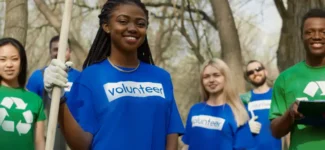How can you get younger people to donate to your nonprofit organization? This is a common question that many nonprofits have regardless of how long they have been around or how big their donor base is. While there isn’t a quick-fix solution that helps nonprofits solve major fundraising challenges, there are things you can do to start laying a foundation to welcome and nurture younger donors.
We worked with an organization called The Family Place, which offers a variety of services and support to immigrant families settling in the D.C. area, to find ways to improve their strategy. After getting to know the organization and its priorities, we uncovered its desire to diversify its donor base, with the ultimate goal of cultivating more younger donors.
The following are three suggestions we shared with The Family Place to help them engage younger donors.
1. Start a junior board.
Junior boards, also called young professional committees, can help you tap into a new donor base you might not have had access to before. Giving young professionals the opportunity to serve on a board gives them board member experience, and it looks good on a resume. It’s also a great opportunity for nonprofits to cultivate a group of advocates who will help spread the word about the organization’s work to their friends and families.
Another D.C. organization, So Others Might Eat (SOME), has a young professionals network that plans and organizes a winter ball as a fundraiser for their peers.
In populous urban areas like Washington, D.C., where you have an abundance of passionate young professionals looking to focus their skills in a meaningful way, a junior board is a great way to:
- Form meaningful relationships with younger community members.
- Connect with more young people interested in your cause through your junior board’s network.
- Build a foundation for lasting support from younger donors.
To grow and manage your junior board, consider letting members take on recruitment to gather more younger supporters.
2. Keep online content updated.
Another suggestion we made to The Family Place that will help attract younger donors is to keep their online content updated. After all, when a prospective donor is researching a philanthropic topic or looking for causes to support, they will most likely go to your organization’s website or social media pages. This is especially true for younger donors, with members of Generation Z using social media 64% more per day than older generations.
The Family Place is currently undergoing a website overhaul. There were a few suggestions we made when it came to their newly designed website, including:
- Using images of real clients. The Family Place has great pictures of its beneficiaries on social media, but we noticed that its newly designed website still had some placeholder photos and stock images. We recommended more photos of smiling community members. Have you taken an audit of the imagery on your website? Is it time for an update? Are these photos telling the story you want to tell your current and potential donors?
- Updating donation buttons, everywhere. The Family Place linked to the donation page on its website in a few different ways. We recommended they correct any broken links and update their Facebook call-to-action button to drive donors to their donation page. When donors are ready to give, it should be easy for them to find your donation page.
- Creating a mailing list sign-up form. With Bonterra Donor Engagement’s Guided Fundraising solution (formerly Network for Good), you can easily create a form for mailing list sign-up that automatically adds supporters to your system. Then, you can email them event invitations, monthly newsletters, and more. Leveraging this feature can help you build more touchpoints with donors without requiring extra time and effort from your team.
Because prospective young supporters are likely looking to online resources to learn about your nonprofit, it’s essential that you make a strong first impression, capture their attention with engaging resources, and refer them to additional ways to get involved.
3. Create a memorable donor thank-you video.
Because The Family Place was already sharing great images of their beneficiaries on their social channels, we wanted to make sure current donors who might not be active on social media were seeing the impact of their donations.
Since younger generations are so tech-savvy, we created a donor thank-you video using impact statements about The Family Place’s programs and images from social media. This video can be sent out via email to donors as a special thank-you campaign or added to their process for thanking new donors.
Refining your strategy to attract younger donors
The Family Place has a wonderful purpose with opportunities to improve its online presence, engage a younger supporter base, and creatively thank donors. Perhaps some of its challenges are your challenges, too. Use the ideas we presented to this organization to help you rethink how you approach the same opportunities at your nonprofit.




